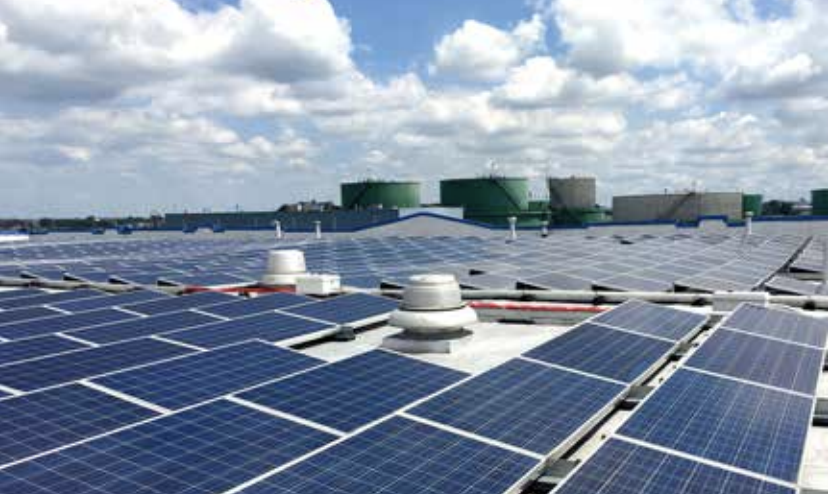
Original source (pdf)

City dwellers may laugh at the idea of putting solar on their roofs, but there’s an alternative: community solar.
This arrangement goes by many names, including shared solar, community shared solar, and community distributed generation (CDG), but the concept is the same. Instead of buying and installing solar panels on your home or property, you subscribe to a piece of a large local solar project built nearby, often along with a few dozen to a few hundred other people who live in the same area. A portion of the electricity generated by these projects gets credited directly to your utility bill, you get a discount on electricity, and you don’t have to pay anything to join.
Community solar allows households, small businesses, and places of worship to receive the benefits of solar energy without the cost or hassle of a rooftop installation. Roughly half of residences in the U.S. can’t host a solar installation because the occupants don’t own the property, or because the roof is too old, too shady, or facing the wrong way for optimal sun exposure. Community solar eliminates these issues, making solar power more accessible to more people than ever before.
In order to be eligible, a resident must live in the same electric utility zone as the project. This might seem like a limiting factor, but it also ensures that the project a group of subscribers is supporting is a local one and that all the energy produced is going into the local grid system. And because this local, clean electricity generation helps out with things like transmission losses and congestion on the grid, potentially alleviating the need for costly grid upgrades, this energy is highly valued and that’s passed on to subscribers in the form of savings. “Too many people either don’t have access to renewable energy or don’t think renewables are a real option for them. This is how we change that,” said Mark Chambers, Director of the NYC Mayor’s Office of Sustainability. “Community shared solar is one of the best ways to ensure that clean, affordable energy is available for everyone.”
In addition to allowing people to participate in solar projects, community solar is also helping states meet their climate and clean-energy goals. New York State, for example, has ambitious goals of meeting 50% of its energy needs from clean energy resources like solar and wind by 2030 while reducing greenhouse gas emissions by 40% from 1990 levels. In order to hit this target, the state will have to add 13,700 megawatts of distributed solar within 12 years—about nine times the total solar installed to date, according to the Acadia Center’s EnergyVision 2030 report. This is a tall order, but community solar will play an important part in helping to reach this goal by increasing the number of people who can participate in solar projects.
Although community solar has only been around nationwide for about a decade and in most states it’s only been an option for a few years, it’s quickly growing in popularity. According to the Solar Energy Industries Association (SEIA), 1,294 MW of community solar has been installed in the U.S. through the third quarter of 2018, and nineteen states now have legislation to support community solar projects for their residents. The solar industry now also employs over 242,000 people nationwide, a number which is expected to increase in 2019, according to The Solar Foundation’s 2018 Solar Jobs Census report.
The clean energy transition is underway, but it will take all of us doing our part. With community solar, that is now easier than ever before.
Travis Tench is Director of Outreach at Powermarket, an NYC-based company that works with solar developers to establish and manage community solar programs. A list of current community solar projects is available at powermarket.io.
